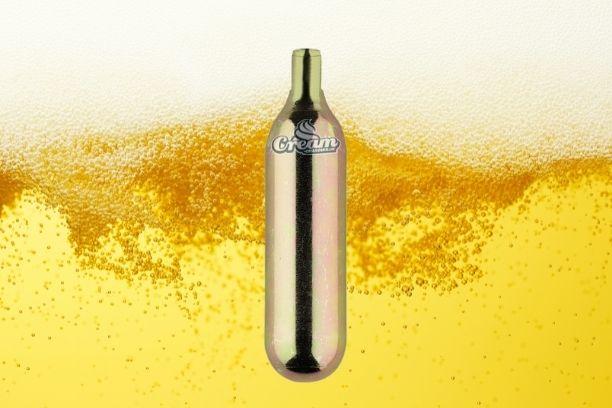Why do beer dispensers need 16g non threaded co2 cartridges?
When beers are canned and bottled at breweries, they are done so with a specific amount of carbonation. When done at a scale like that, there are standards that each beer typically meets before being sent out.
This can get a little tricky when using beer dispensers though. They are also packaged with a standard amount of CO2, but once they are used, that ratio of CO2 can change.
That’s why it’s important for beer dispensers to use 16g Non threaded CO2 cartridges to maintain a proper balance of CO2 to retain taste and stay pressurized for pouring.
How The Carbonation Process Works
While they don’t often get lumped in with extremely fizzy drinks like soda or sparkling water, beers are actually naturally carbonated when they are made. Carbonated drinks are actually simpler than you might think.
All that’s happening is combining the liquid, in this case, beer, with the CO2 under pressure.
The pressure will force the two to mix together, and the result is a drink that is slowly releasing carbon via those little bubbles floating to the top of the drink.
Carbonation can be different in certain types of beers. There isn’t just one standard amount of CO2 that all beers use. So a light lager will probably have a lot more CO2 than something like a heavy ale.
Just like soda, eventually, the CO2 will escape and leave the drink flat. This takes longer with beer than soda, but in time the beer will lose all of its carbonation.
With a can or bottle, this usually isn’t an issue. You will probably be finishing the drink after opening it, so no need to worry about it going flat later on.
Where you will need to start thinking about this is with a beer dispenser that uses a keg system that might take a matter of days to finish. While it may be packaged carbonized, eventually the beer will lose some of that as dispensed if nothing is done.

Why Additional Carbon Dioxide Is Needed
Some beer kegs you might see at a barbeque use a tap that’s called a party pump. These are great for personal gatherings when you are confident the whole keg will be finished. However, these aren’t used by bars and restaurants.
This is because as you use it to pump in oxygen to the tap to create more pressure. Extra pressure is what lets the beer come out through the tap. The problem with this is that introducing oxygen into the keg will make the beer go flat.
Think of opening a bottle of beer and letting it sit for two days and then drinking it. That’s similar to what would happen to a keg using a party pump after a couple of days.
Because of this issue, there is another way to keep the keg pressurized without pumping in oxygen. Kegs can be attached to pressurized carbon dioxide so they maintain pressure for pouring while staying properly carbonized.
There are a few different setups that can be used. CO2 cartridges are a great size for small, portable kegs and at home beer dispensers which have gained enormous popularity in recent years. Both the beer dispenser and cartridge will be easily mobile. With the lesser amount of beer, it takes less CO2 to pressurize.
CO2 cartridges will not be able to keep the exact perfect pressure for the beer dispenser though because they do not have a gauge. However, with a smaller amount of beer in the keg, it should be finished drinking within a short amount of time.
So there may be a little bit of flatness near the end, but that’s the trade-off for the convenience of using the small beer dispenser cartridges with your at home beer dispenser instead of using large Co2 bottles with pressure regulators, hoses etc.
For larger containers, it’s best to use full tanks containing CO2 for long-term storage. Tanks can come in many different sizes depending on how big of a dispenser they need to keep carbonized.

